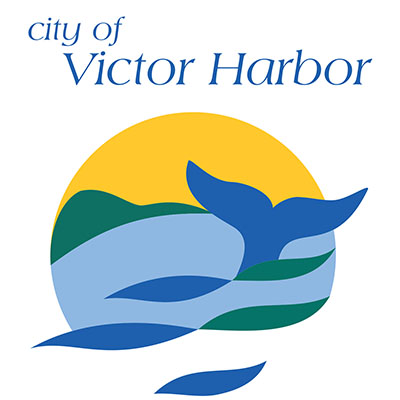Coast and Marine
One of Council's objective is to protect and enhance our coastal and marine environment. The Council also aims to conserve our valuable water resources to ensure future potable water supplies and environmental flows. More information about the Council's objectives relating to coast and marine can be found in the City of Victor Harbor's Environmental Management Plan.
Water Conservation and Quality
Victor Harbor is home to a unique and diverse range of waterways. The two major rivers, the Inman River and Hindmarsh River, have freshwater streams flowing from the Southern Mount Lofty Ranges into the Southern Ocean.
These rivers provide almost continuous corridors of vegetation providing refuge for native wildlife. The river estuaries serve an important ecological function because they are the interface between saline and fresh water and land and sea.
Council undertakes a variety of work to protect and enhance the water quality in our watercourses, estuaries, lakes and the marine environment. Read the City of Victor Harbor's Water Reuse Plan.
Encounter Marine Park
The Encounter Marine Park offers some of Australia's best-preserved ocean wilderness. Stretching from the base of the Fleurieu Peninsula to the north-eastern coast of Kangaroo Island and the Coorong, the park provides plenty of opportunities to enjoy diverse marine life.
For information about the Encounter Marine Park, please visit the National Parks and Wildlife Service website.
Boating and Personal Water Crafts
A number of boat ramps are located within the City of Victor Harbor.
For information on the use of Personal Water Crafts (PWC) and Boats please refer to the South Australian Government Website-Boating and Marine or the Department of Planning, Transport and Infrastructure Customer Service Centre.
Hooded Plovers
The Hooded Plover (Thinornis rubricollis) is a small shorebird with a distinctive red beak, red-ringed eye and striking black hood and throat. Unfortunately, it is listed as vulnerable nationally, with fewer than 800 in South Australia and only 7000 in Australia.
‘Hoodies’, as they are affectionately known, lay their eggs directly on beaches during spring each year, with both mum and dad plovers working together to raise chicks.
Overlapping with our coastline’s busiest times of year, humans, dogs and vehicles are these bird’s biggest competition with nests disturbed, eggs broken and adult Hooded Plovers scared away from their young chicks.
The City of Victor Harbor, along with the Adelaide and Mount Lofty Natural Resources and Birdlife Australia work together to erect signs and temporary fencing to manage the successful breeding of these tiny beach goers. This team approach in caring for nest sites is paying off, with hatching success almost doubling at sites where temporary signs and rope fences are put up to encourage leashing of dogs and to stop eggs being crushed.
During the 2019/20 season there were 27 known Fleurieu Peninsula breeding pairs with 3 chicks successfully fledged within Victor Harbor. The 2018/19 season saw 33 recorded active nests on the Fleurieu Peninsula, with 11 chicks eventually fledging.
As a community, we can keep our dogs leashed at all times on our beaches, particularly near the signed nesting sites; walk below the fenced areas, and watch quietly or move away when you see Hooded Plovers.
For more information about Hooded Plovers and how you can help to protect them, visit The Department for Environment and Water and Birdlife Australia.
Coastal Adaptation Study and Strategy
In 2021, the City of Victor Harbor engaged coastal experts, Integrated Coasts, to undertake a Coastal Adaptation Study. This project invited the community to provide historical anecdotes and photos of the Victor Harbor coast, so local knowledge could be captured in the Study.
The Study looked into how the Victor Harbor coastline from the eastern boundary at Investigator Car Park to the Bluff Boat Ramp has been changing over time. It researched historical records of storm events, tidal data, beach profile monitoring, and aerial photography. This information helped to look at risks and vulnerabilities of the coast, and how it may plausibly change in the future, using scenarios for the year 2050 and 2100.
To ensure a fine-grained approach, the Coastal Adaptation Study was broken into three main areas or ‘cells’. These are Cell 10 (Hayborough/McCracken), Cell 11 (Victor Central) and Cell 12 (Encounter Bay).
Findings from the Coastal Adaptation Study fed the logic for the Coastal Adaptation Strategy. The Strategy provides a framework which will guide Council in its decision-making for coastal management and planning, and help inform our community of the potential risks and hazards.
One of the recommendations that Council has already begun to implement is the bolstering of the Esplanade dune system, by beginning the process of widening the vegetated dune system. During the 2022 planting season, Council will be planting approximately 300 local trees and shrubs in this section of dune, helping to stabilise the sand and build a more resilient coastline.
The Study and Strategy main report, each cell report, and an additional report on the geomorphology of our local coastline, can be viewed in full here.

